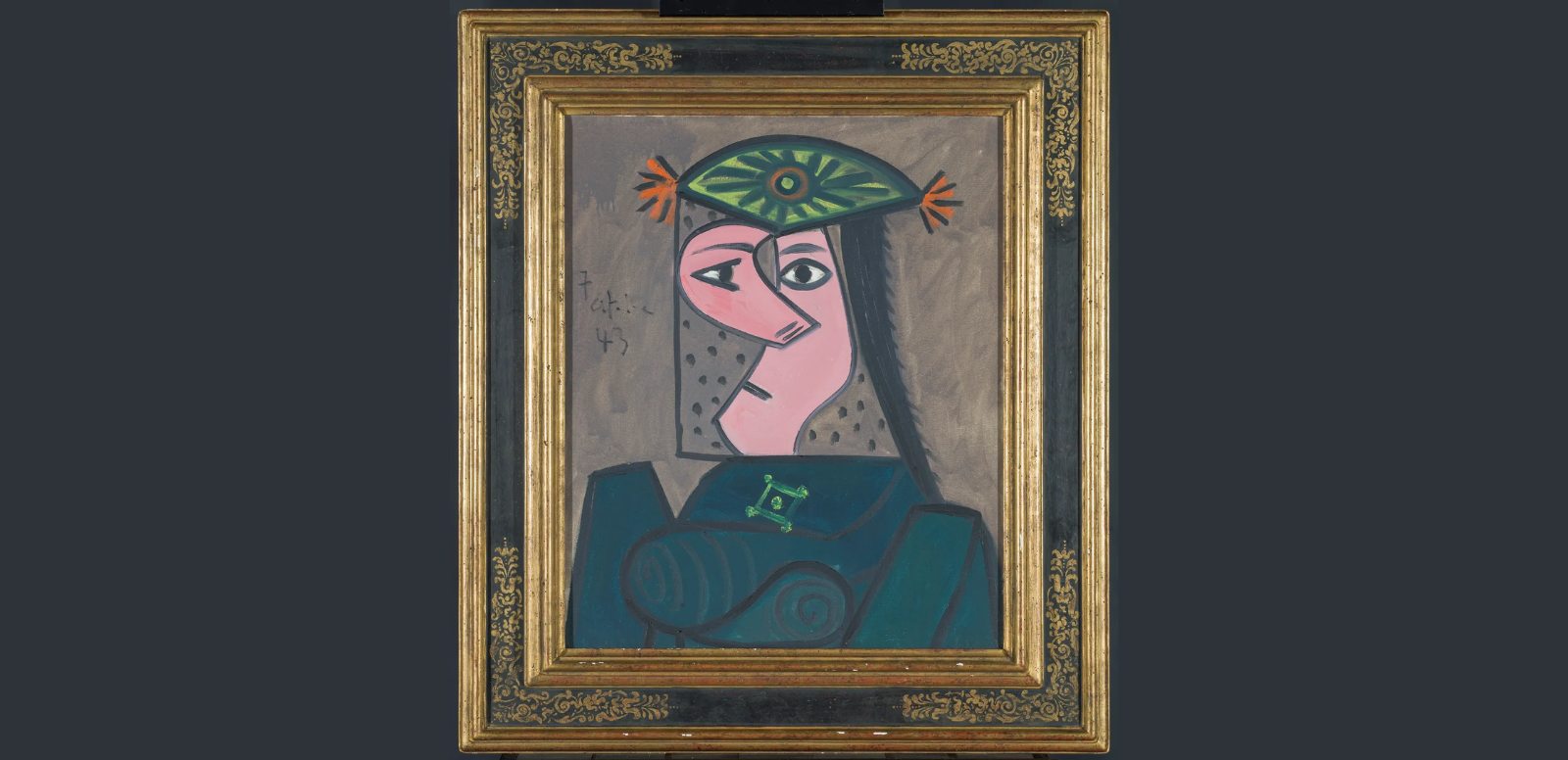
© Sucesión Picasso, VEGAP, Madrid, 2023
Bust of a Buste de femme 43 was completed by Pablo Picasso in a single day, exactly on 7 October 1943. The painting can be read in the difficult historical context of the time, the end of the Spanish Civil War and in the midst of the Second World War. The violence of this period will mark a work in which Picasso tries to appease or bring order to the external disaster. During this period he produced a series of portraits marked by the exaggerated deformation of the figures' anatomy. Bust of a Woman 43 is notable for the contrast of the colours in the background, the rapid, sure stroke and the decomposition of the figure.
The strong influence of the Spanish pictorial tradition on the artist can be seen in this work, which runs through his entire oeuvre. Pablo Picasso, from a very early age, learned by copying from the great masters, a practice in which he engaged especially during his stay in Madrid at the Prado Museum where this work is today, flanked by El Greco and Velázquez's The Jester Calabacillas, two very influential artists in Picasso's oeuvre.
This work is a deposit from the American Friends of the Prado Museum, donated by the Aramont Art Collection, an American non-profit organisation whose mission is to support the Museo del Prado and promote greater awareness of its collections in the United States.
In this link you can see how the work is installed in the museum.

